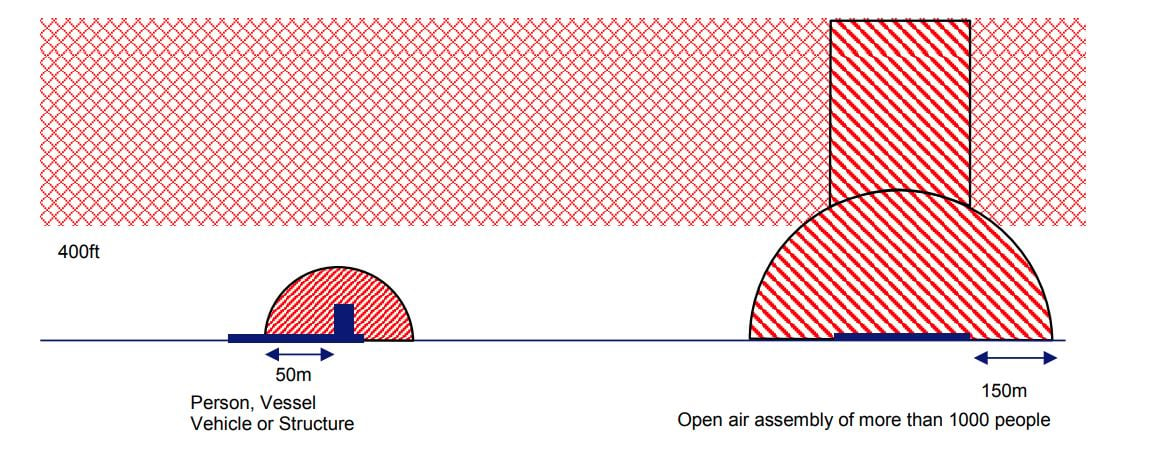For a long time, ourselves teaching this included, that you must treat the space around your Drone as a Cylinder rather than a bubble around your aircraft, however, as the regulations and wording have changed there became an argument over whether you could directly overfly people with your drone in a congested area who were not under your control.
It is true that this once was the case, however, the wording has now been removed from the Standard Permissions (PfCO) and the new CAP 722 does even give diagrams to show what is possible.
Let’s take a look.
Flights with a Standard Permission (PfCO)
As you can see from the diagram below (taken from the CAP 722 V7). You can see the thatched areas in red are areas where you cannot fly. So on the left you can see that you can directly overfly Persons, Vessels, Vehicles or Structures as long as you are 50m away. They do clearly state that you cannot go above 400ft, so there is a strip of airspace above where you can directly over fly.
On the right hand side, for an Open air assembly of more than 1000 people, you can see that the bubble is 150m, and it is clearly shown as a bubble.
You can overfly (to an extent) as long as you don’t go over 400ft.

How do I know when I’ve hit the bubble?
How do you know when you’re in the bubble? The honest answer is there’s no definitive way of knowing. We would always recommend that you air on the side of caution. It’s all been well and good flying on the limits, but if anything were to happen to the aircraft whilst you were over people, you would burst that bubble and, potentially, be endangering life.
For this reason, we don’t recommend that people directly overfly people not under their control as this will help you to mitigate the risks of endangering life.
Watch the video below by Mr MPW for further clarification on the matter.
What is ‘under your control’
This is another area that the updated CAP 722 has made more clear, as sometimes people used to interpret this in their own way.
- Persons under the control of the SUA operator or remote pilot can generally be defined as: Persons solely present for the purpose of participating in the flight operation.
- Persons under the control of the event or site manager who can reasonably be expected to follow directions and safety precautions to avoid unplanned interactions with the small unmanned aircraft. Such persons could include building-site or other industrial workers, film and TV production staff and any other pre-briefed, nominated individuals with an essential task to perform in relation to the event.
Spectators or other persons gathered for sports or other mass public events that have not been specifically established for the purpose of the flying operation are not regarded as being ‘under the control’ of the of the SUA operator or remote pilot.
So it’s quite clear, the people who are under your control are the ones who are fully aware of what you are doing and are present for the flight.
The CAP 722 then goes on to define what ‘under your control’ means for Vessels, Vehicles and Structures.
A vessel or vehicle could be said to be ‘under the control’ of a person if:
- That vehicle or vessel is present for the purpose of participating in the flight operation; and
- The operator of the vehicle or vessel (for example the driver of a car or captain of a ship) and any passengers are under the control of the remote pilot and can reasonably be expected to follow directions and safety precautions to avoid unplanned interactions with the small unmanned aircraft; and
- The owner or other person with an interest in the vessel or vehicle (such as a lessee) has granted permission for a UAS to operate within 50 metres of that vehicle or vessel.
structure could be said to be ‘under the control’ of a person if:
- The owner or other person with an interest in the structure (such as a lessee) has granted permission for a UAS to operate within 50 metres of that structure; and
- Any occupants of the structure are under the control of the remote pilot.
So a car within 50m of your aircraft needs to be participating in the flight and the driver and passengers need to be aware that the flight is taking place and be expected to follow directions from the Remote Pilot.
If a car is parked, the owner of that vehicle needs to be aware that you intend to operate within 50m of their vehicle. Even if the vehicle is unoccupied, you need permission from the owner to operate closer.
In regards to structures, for example a house or block of flats. The owner of the building (or the persons with an interest such as the landlord of the building) needs to grant permission for you to fly within 50m, and then any occupants or residents of the building, also need to be under control of the remote pilot. We cannot, as responsible operators assume that the permissions of the occupants has been granted.
So yes, if it is a block of flats you wanted to film up close, each occupant needs to be under control of the remote pilot, and as the wording in the CAP 722 has stated, they need to be present for the purpose of participating in the flight operation. If they don’t grant permission, or are willing to be within 50m, then you cannot fly.
This is the same as we have taught since 2015, and regardless of other operators interpretations, it’s quite clear what you must do.
These regulations are in place for a reason, safety as well as privacy and we must respect both. If we want to continue with the safe development of this industry, it is the responsibility of every operator to make sure that the regulations are followed so the industry can continue to develop and evolve, rather than be restricted and grounded.


